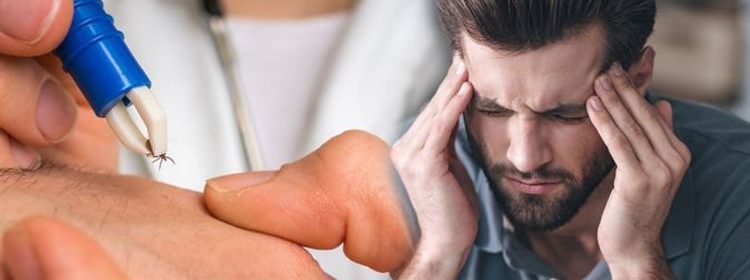Lyme disease symptoms: How to tell if you’ve been bitten – the three signs

Lyme disease, or Lyme borreliosis, is a bacterial infection spread to humans by infected ticks. If left untreated, there is a risk that a person could develop severe and long-lasting symptoms. A person is more likely to get Lyme disease if they live or spend time in grassy and heavily wooded areas where ticks carrying Lyme disease thrive. But how can you be sure it is just a normal bite or a bite that could cause Lyme disease?
The NHS said: “Many people with early symptoms of Lyme disease develop a circular red skin rash around a tick bite.
“The rash can appear up to three months after being bitten by a tick and usually lasts for several weeks. Most rashes appear within the first four weeks.”
Centers for Disease Control and Prevention said on their website: “A circular, red rash with central clearing will appear from Lyme disease that slowly expands.
“A person could also get a red, expanding lesion with central crust.
“Multiple rashes, a red, oval plaque on trunk or an expanding rash with central clearing are all common rash symptoms of Lyme disease.”
Headaches are a symptom of Lyme disease. A vast majority of Lyme disease patients complain of headaches as a chief symptom, with pain ranging from moderate to severe.
Patients of Lyme disease often encountered migraines, light sensitivity and nausea. Though tick-borne diseases can cause pain throughout the cranium, migraines are usually focussed to one side.
Ticks that may cause Lyme disease are found all over the UK, but high-risk areas include grassy and wooded areas in southern England and the Scottish highlands
NHS
A reason why a person gets headaches caused by Lyme disease is because it is an inflammatory disease that enters the central nervous system.
Another major symptom Lyme disease is sleep disturbances and having high temperatures.
Sleep disturbances in Lyme disease are common as well as body temperatures fluctuating, and night sweats or chills.
In a 2013 study, 60 per cent of adults with early Lyme disease reported sweats and chills.
The NHS added: “Only a small number of ticks are infected with the bacteria that cause Lyme disease.
“A tick bit can only cause Lyme disease in humans if the tick has already bitten an infected animal.
“But it’s still important to be aware of ticks and to safely remove them as soon as possible, just in case.
Ticks that may cause Lyme disease are found all over the UK, but high-risk areas include grassy and wooded areas in southern England and the Scottish highlands.”
Lyme disease is an under-researched and often debilitating disease. It is a serious tick-borne disease with a wide range of symptoms.
If you get treated as soon as possible with an adequate course of antibiotic, a person will have a better outcome.
Other symptoms to look out for include fatigue, achy stiff joints, dizziness, fever, cognitive decline, sensitivity to light, skin outbreaks and other neurological problems.
It’s important to speak with your GP if you suspect you might have any of these symptoms.
Source: Read Full Article


